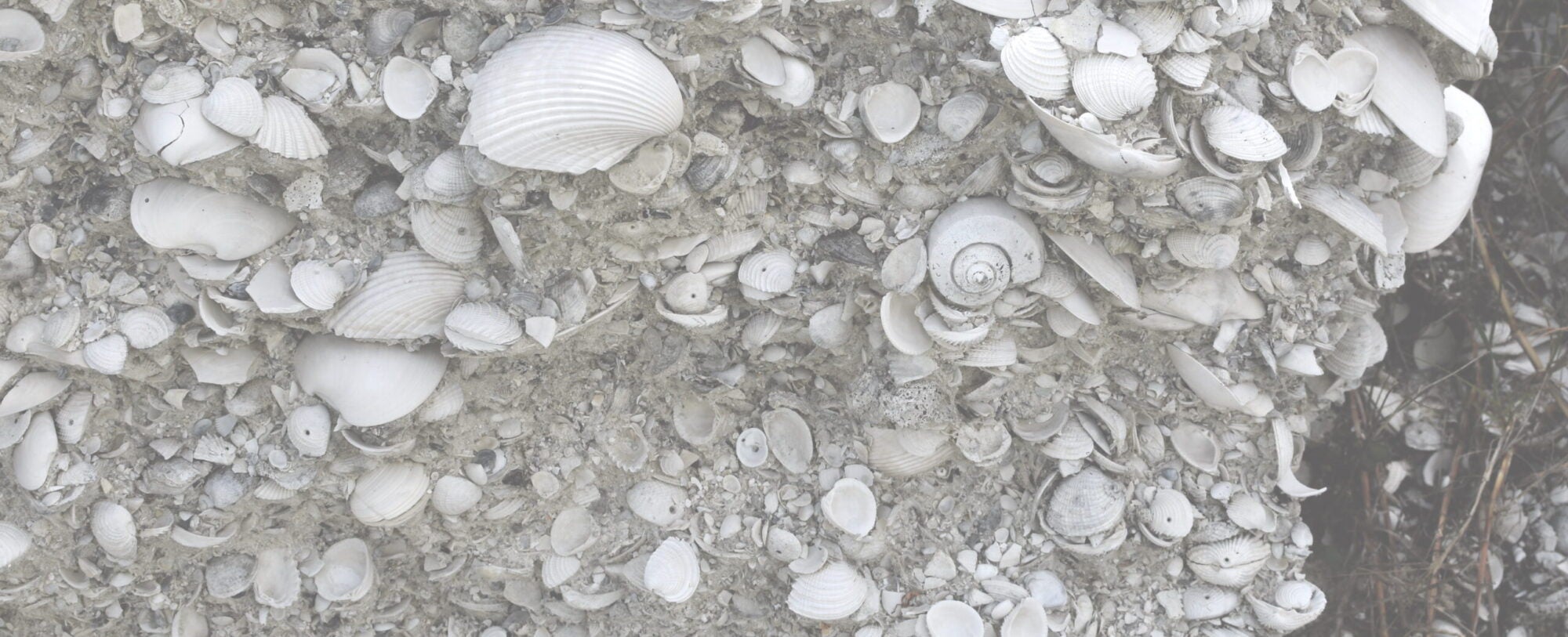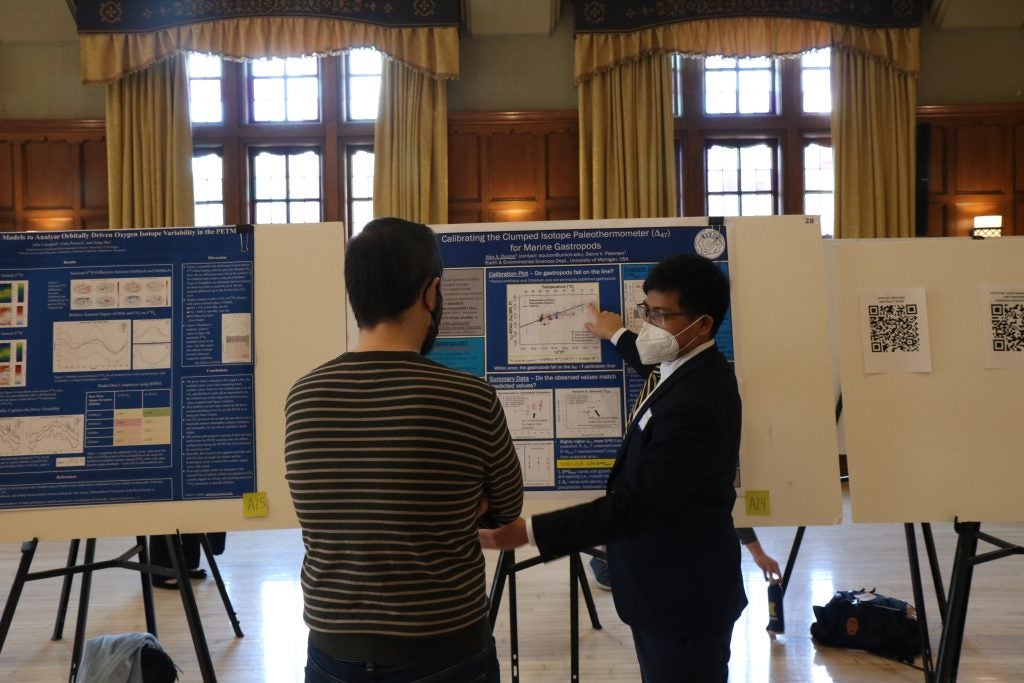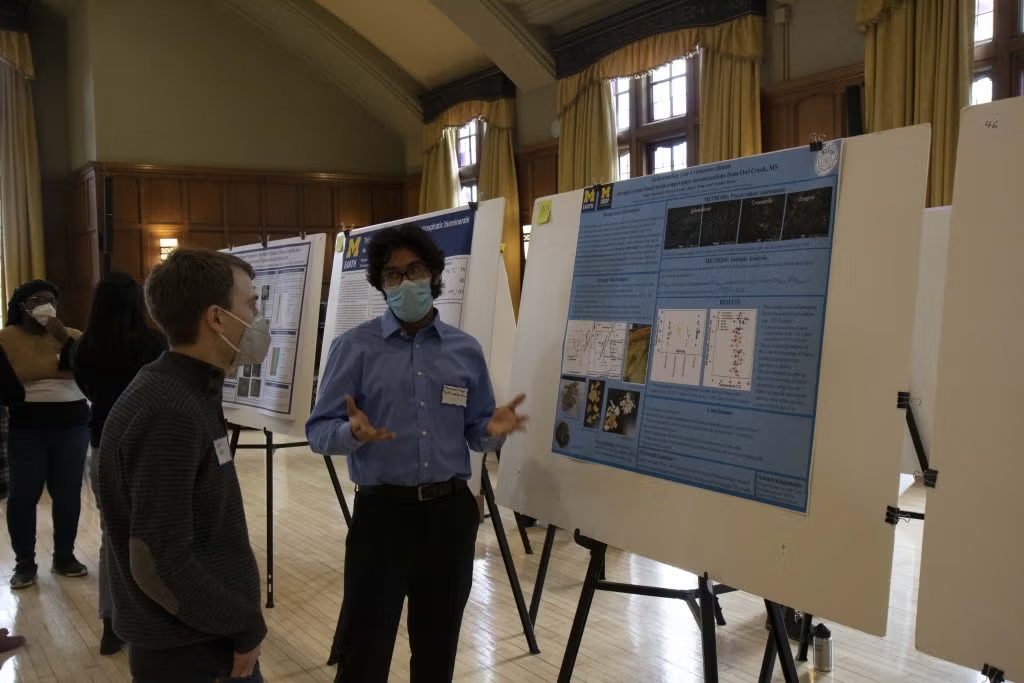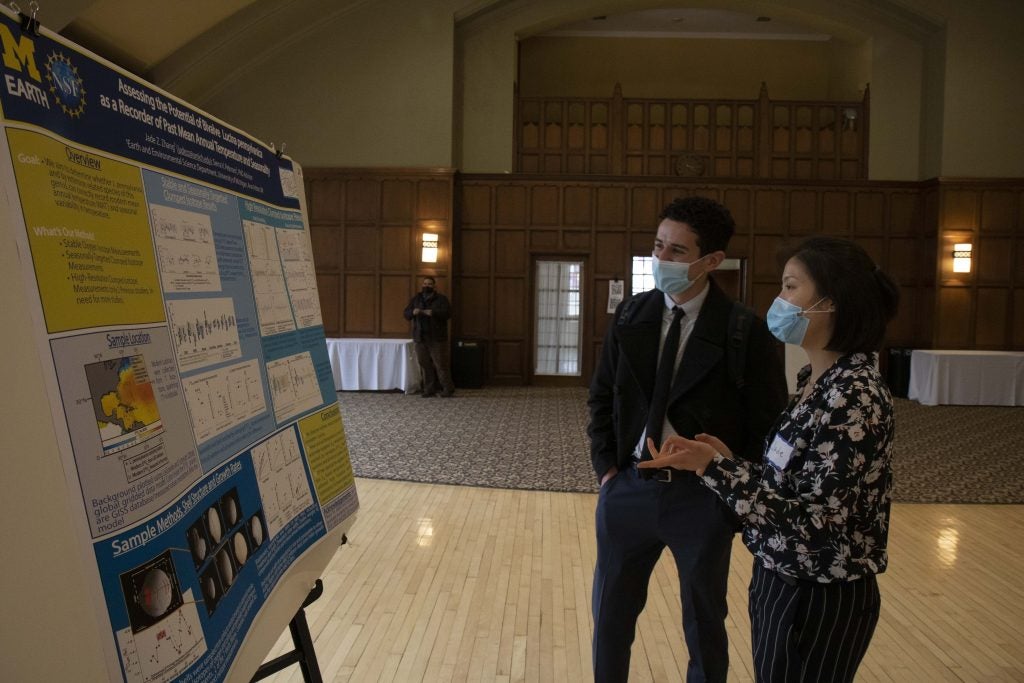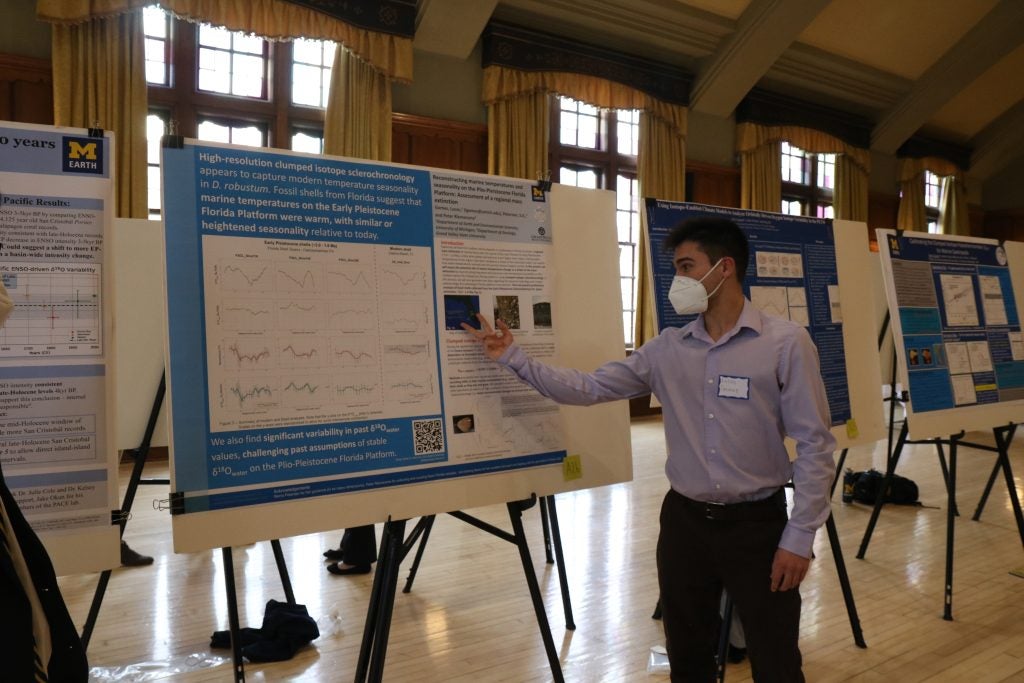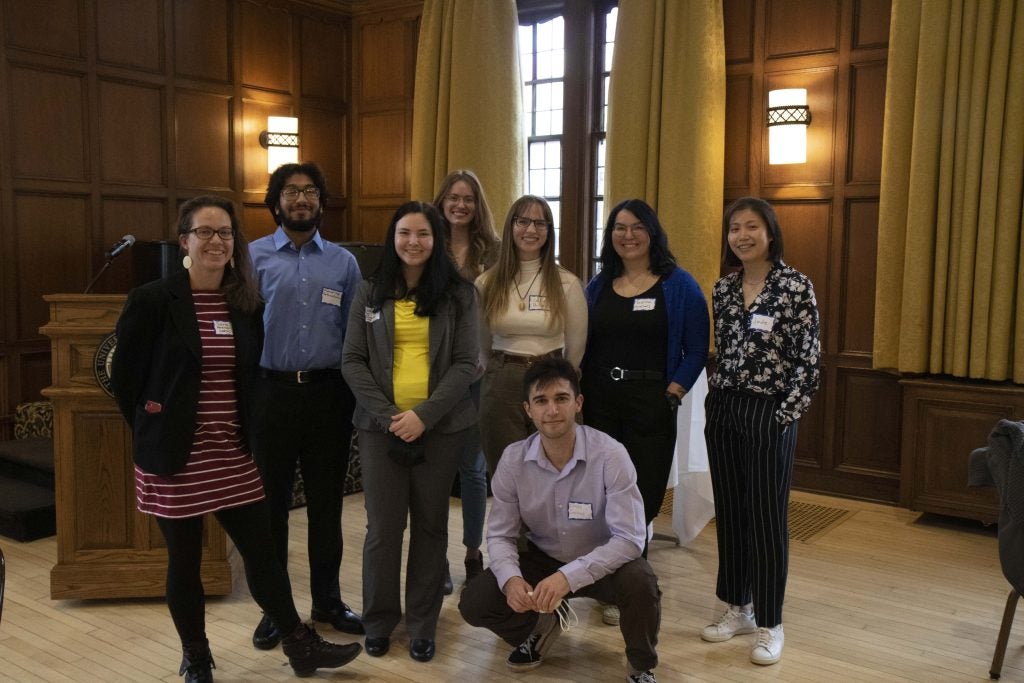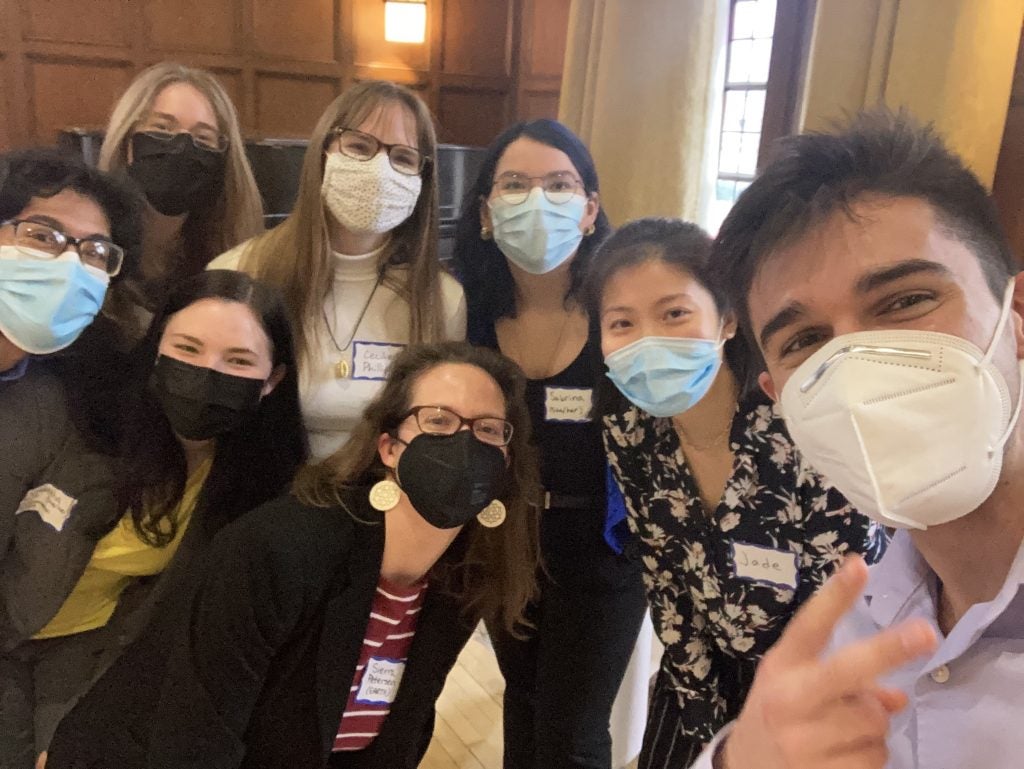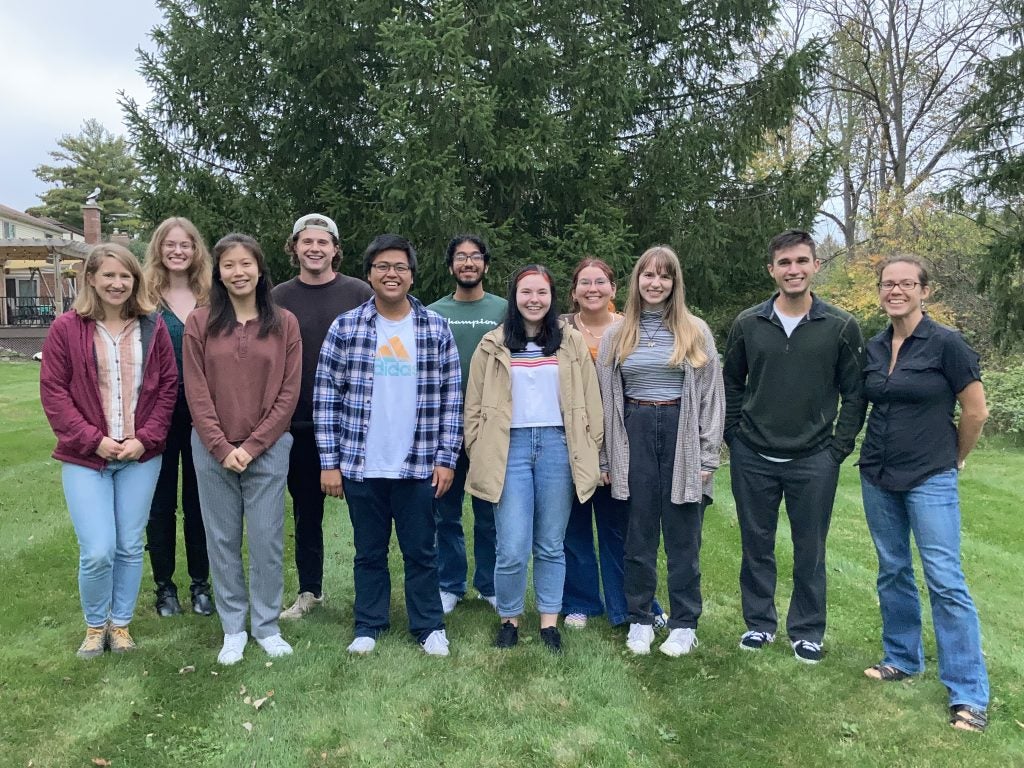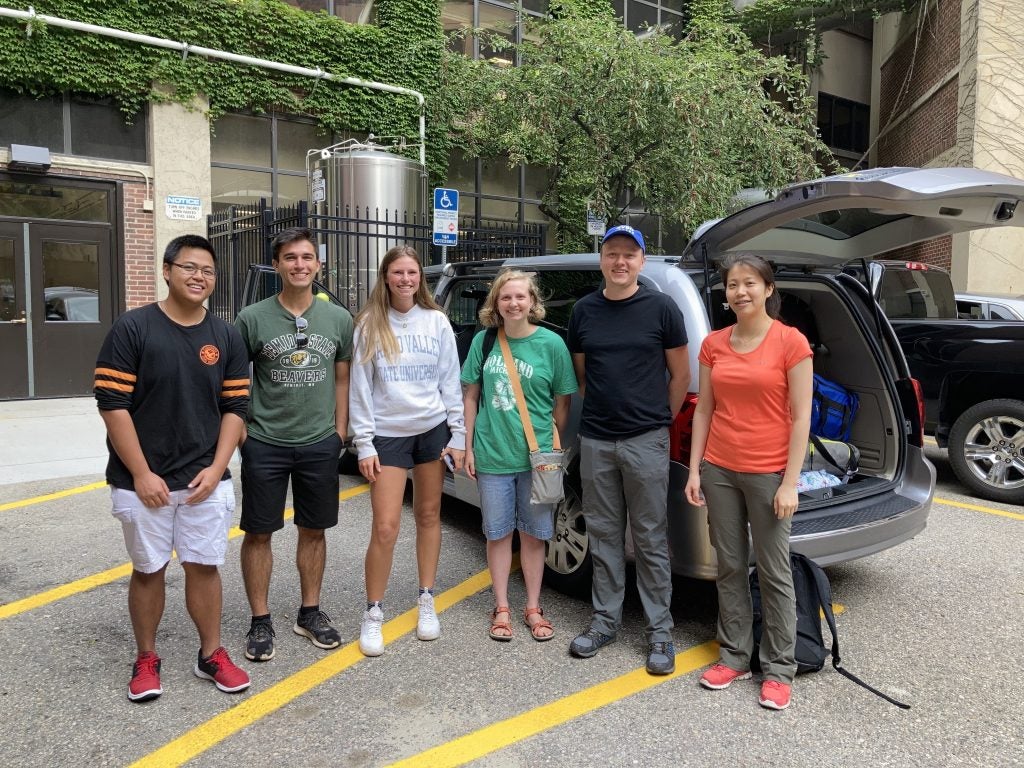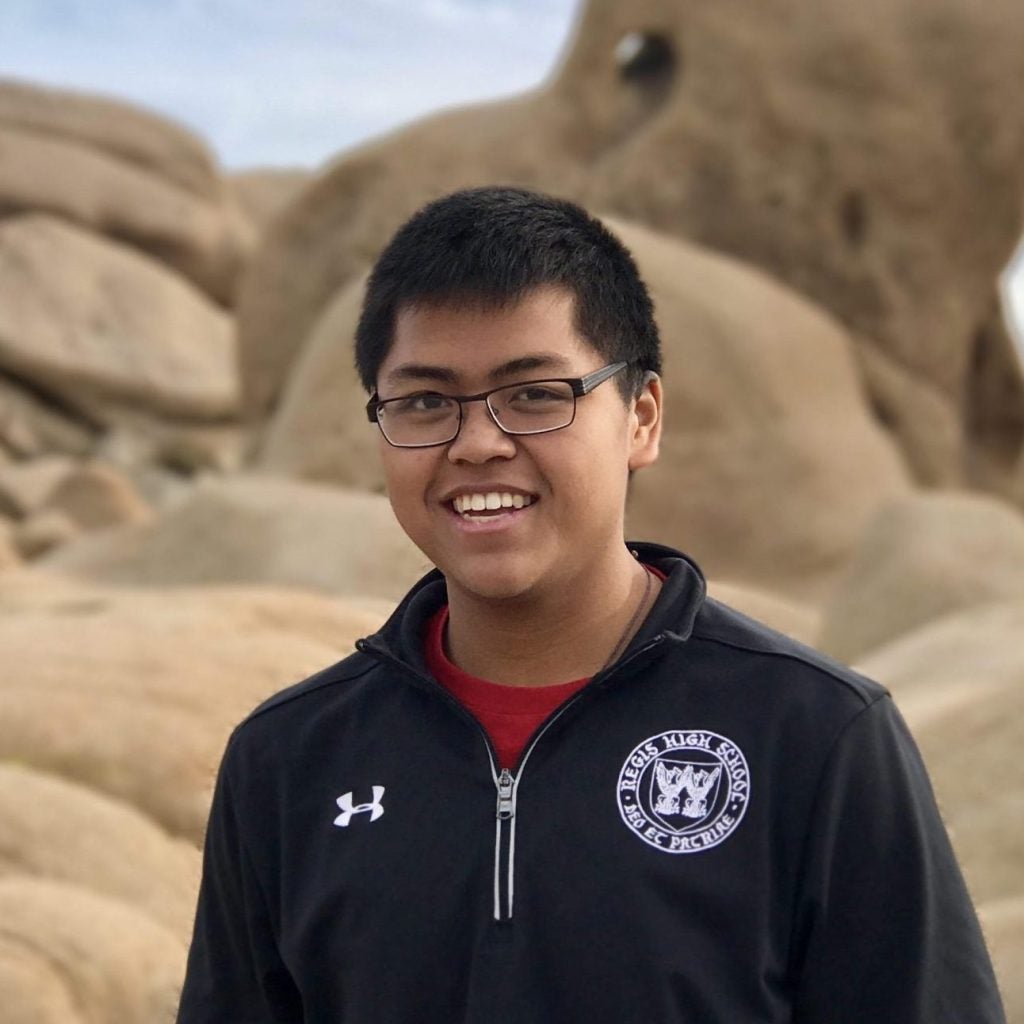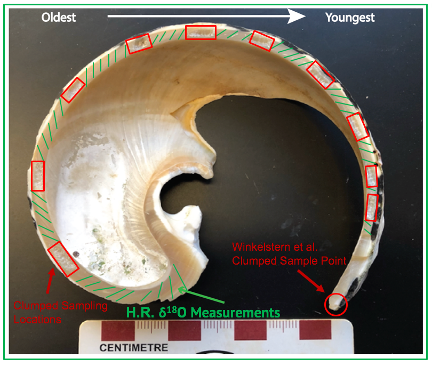Postdoc Julia Kelson (joint SCIPP lab and IsoPaleoLab) recently published an exciting paper in the journal Geology looking at a large estuary that existed in Southern California during the Eocene. This work brings together multiple research groups in the department, and has built gradually over the years from Nathan Niemi originally setting out to study the Goler Formation, to Sierra adding d18O, d13C, and D47 results while she was still a postdoc, to Julia and Ben Passey adding D17O to round out the story.
We found covariation in d18O, d13C and d18Owater (derived from D47-temperatures), suggesting an estuarine environment with an isotopically depleted freshwater source. To be as isotopically depleted as measured, the freshwater was infered to come from high-elevation precipitation and potentially snowmelt. The including of D17O, which is an indicator of the amount of evaporation that a water mass has undergone, suggested that the inferred d18Owater of the freshwater source was actually overestimated (it should have been even lighter) due to evaporation. This led us to infer that paleoelevation may actually have been even higher at this time, to produce even more isotopically depleted precipitation.
Overall, this paper highlights the power of combining multiple isotopic proxy systems to answer climate,hydrology, and even tectonic, questions in the past. Great job Julia!
LINK TO PAPER: https://pubs.geoscienceworld.org/gsa/geology/article/doi/10.1130/G49634.1/612992/Looking-upstream-with-clumped-and-triple-oxygen

